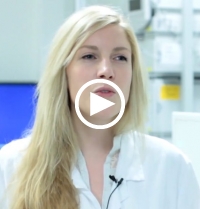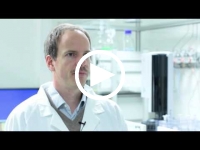
Forskningsprosjekter
With its high sensitivity and depth-independent high resolution, PET is the most promising non-invasive imaging technology for providing information on biochemical processes in quantitative units The management of diseases of the central nervous system would benefit strongly from the development of imaging guided diagnosis, -therapy planning and follow up of therapies. We therefore prioritise the development of new imaging platforms that will allow integration of PET-techniques to meet the urgent requests to the field of biomedical imaging.
Neurodegeneration (Alzheimer’s Disease, vascular dementia)
Overall, the projects on Imaging in Neurodegeneration aim to develop improved non-invasive, quantitative imaging methods that are directed at the key, early steps of disease progression. Clinical protocols comprise imaging b-amyloid plaques in patients with Alzheimer’s disease using 11C and 18F-tracers, along with preclinical developments of tracers for GnrH and hallmarks of vascular disease in neurodegeneration. Multimodal imaging is used to establish a firm linkage of imaging information with genetic, histological and proteomic in vitro characterization of these molecular markers of disease.
Neurooncology (Brain tumours)
Amino-acid PET currently stands out as one of the most promising approaches for improving diagnostic imaging in glioma brain tumours. We will perform comparative evaluations of one established tracer and a novel tracer for the amino-acid transporter. Complementary modalities such as structural and functional magnetic resonance imaging, as well as immunohistochemical validation of biopsies are implemented in preclinical and clinical protocols. The identified more promising compounds will be forwarded to clinical trials and used as a tool for improved routine clinical diagnostics.
Pain and addiction (abuse of opioid and stimulant drugs)
PET may be of particular value for elucidating the nature of adaptions in the CNS that are exerting an initiation of opioid and stimulant drug seeking behaviour, development of compulsive drug use, tolerance and withdrawal syndromes. Knowledge of the quantitative relationship between brain biochemistry, receptor occupancy and behavioural as well as therapeutic effects is invaluable in the optimization of therapeutic protocols, including the evaluation and development of new pharmacological treatments. Our development programs directs at providing 18F-labeled tracers for mu and kappa opioids that will to improve PET-diagnostics for use with these disease.


